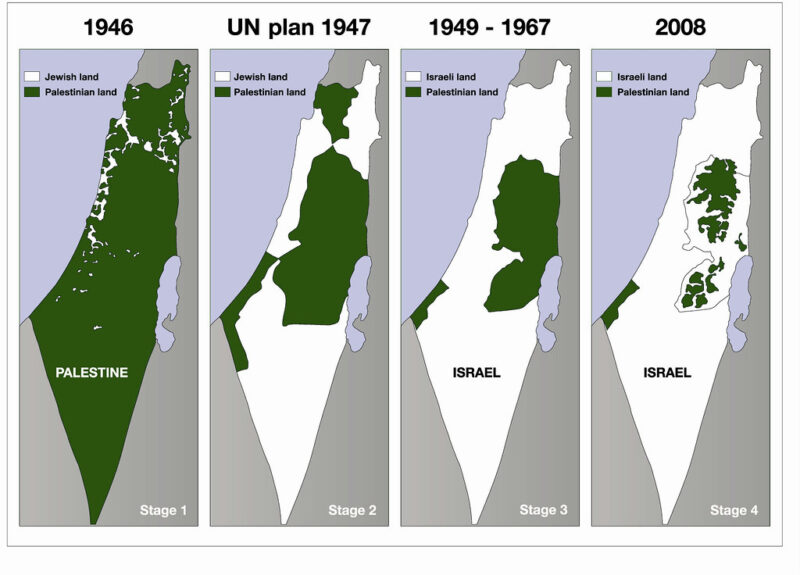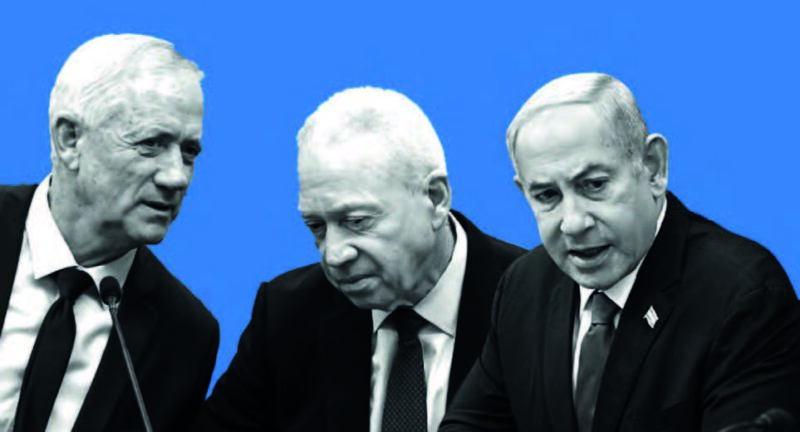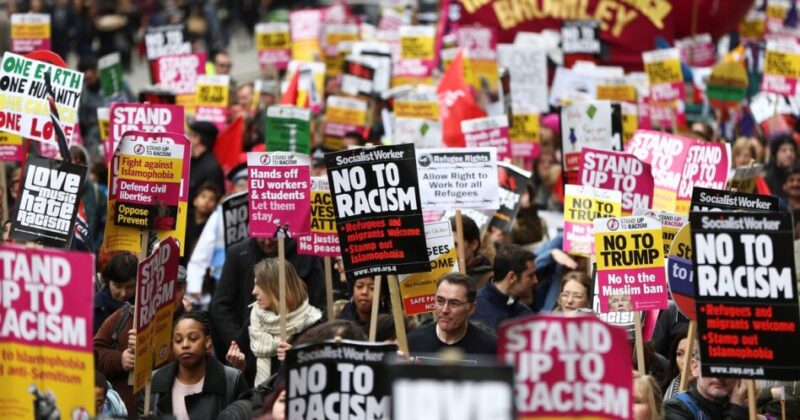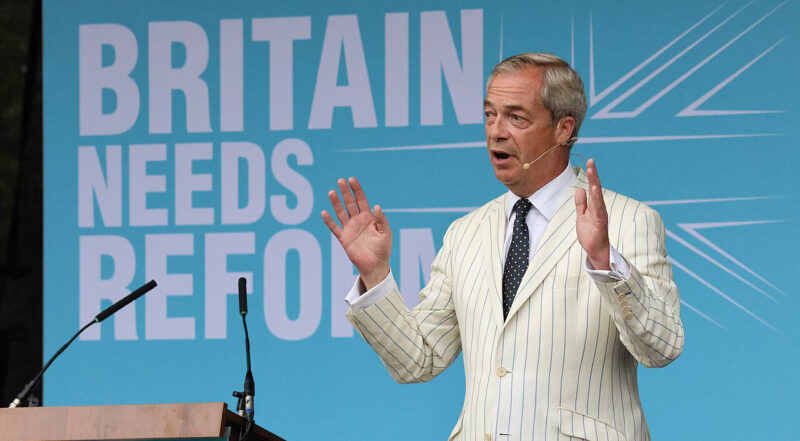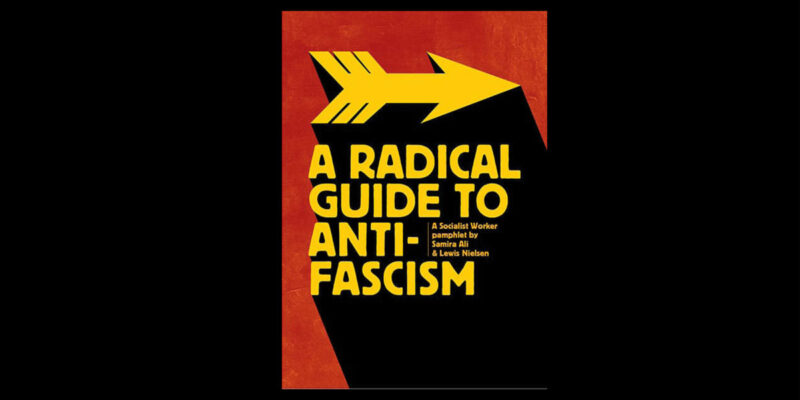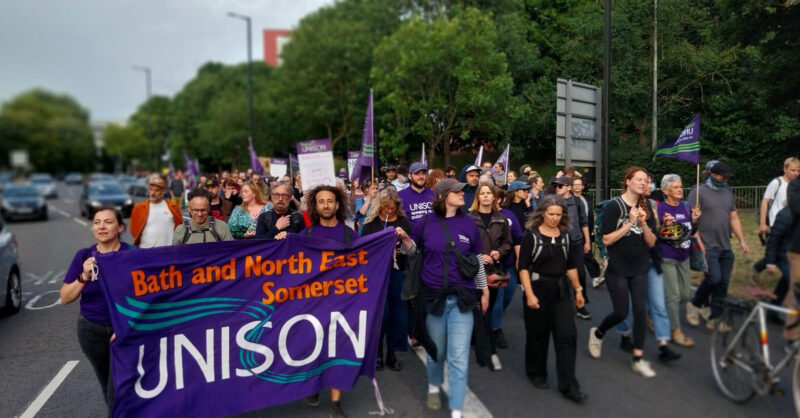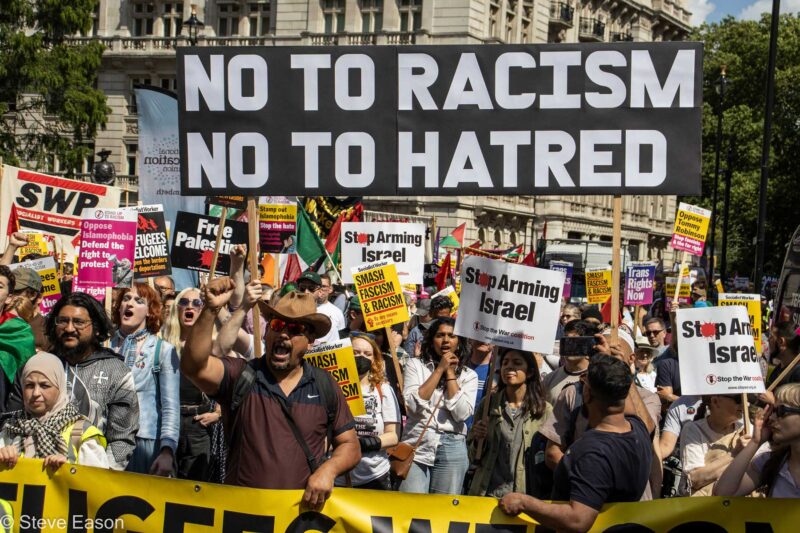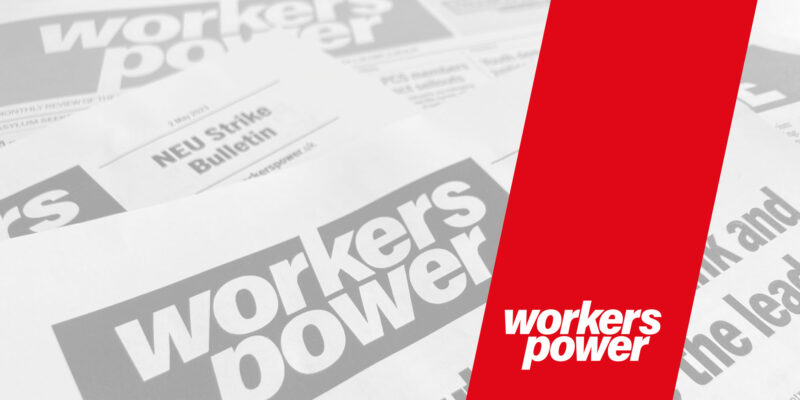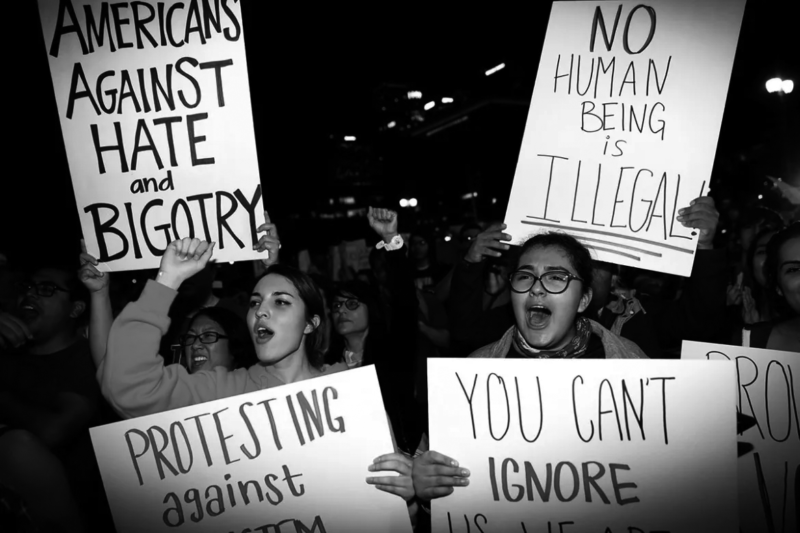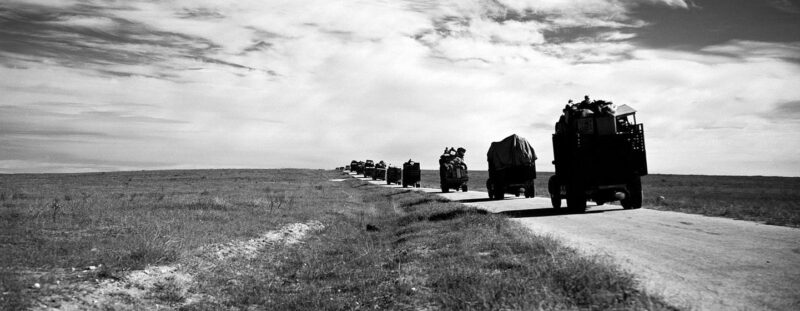Ukraine: Kyiv regime rules under fascist whip
For the first time since the Second World War, fascists have come to power through an insurrectionary movement. Kady Tait reviews the situation
Power comes from the barrel of a gun. The counterrevolutionary regime composed of thieves, fascists and hypocrites in Kyiv has secured the temporary loyalty of the fascist militias by conceding key levers of state power to Svoboda (“Freedom”) and Pravy Sektor (the “Right Sector”).
The posts now occupied by unreconstructed fascists were claimed as their reward for their vanguard role in the armed overthrow of the government of President Viktor Yanukovych.
The armed and well-organised fascists operating under the umbrella of the Right Sector acted as the shock troops of the Euromaidan “revolution”. It was these forces that rejected the EU-sponsored “peace” deal.
Instead they summoned reinforcements from their police allies in Lviv, surrounded the parliament in Kyiv and ensured the appointment of a government that locked out the liberals in favour of a stitch up between ultra-nationalists and open fascists.
This was the result of the USA’s successful efforts to frustrate the plans of German imperialism and its Ukrainian client Vitali Klitschko, whose Ukrainian Democratic Alliance for Reform received nothing in the anti-democratic distribution of spoils. The US imperialists would rather have “their” people in power – even if that means getting into bed with the fascists of Svoboda.
The fascist ministers include Andriy Parubiy, commander of the Maidan self-defence forces and a founding member of Svoboda. He was appointed Secretary of the National Security and Defence Council, which presides over the defence ministry and the armed forces.
His deputy secretary is Dmytro Yarosh, leader of the Right Sector coalition and a former mercenary who fought alongside the Chechen resistance.
Key posts have been granted to Svoboda members Oleksandr Sych (deputy prime minister), Ihor Tenyukh (defence), Serhiy Kvit (education), Oleh Makhnitsky (Prosecutor General), Ihor Shvaika (agriculture) and Andriy Mokhnyk (ecology).
Right Sector commandant Stepan Kubiv is the new chairman of the National Bank of Ukraine. Dmytro Bulatov and Tetiana Chornovol, both linked to the anti-Semitic and ultra-nationalist paramilitary organisation Ukrainian National Assembly – Ukrainian National Self Defence have been rewarded with the Youth and Sports ministry and the government’s new “anti-corruption committee” respectively.
The social crisis in Ukraine has allowed the two wings of Ukrainian fascism – the street fighters and the politicians – to capture key levers of state power.
The government has committed to elections by 25 May. The fascists, however, have not wasted a single day in driving through as much of their agenda as possible.
In their first hours in office they released dozens of their imprisoned comrades and tabled motions to terminate the official status of Russian and other minority languages, to rescind Crimean autonomy and to outlaw the Communist Party of Ukraine (KPU). With these actions they must bear a heavy responsibility for provoking a wave of pro-Russian chauvinism in the East and particularly in the Crimea.
The presence of so many fascists in the self-appointed “transitional government” is no accident. The growing desperation of millions impoverished by the economic crisis, the leading role played by the fascists during the Maidan protests and the manoeuvring between the rival EU and US imperialists has catapulted them into a position where their demands for a share of state power could not be ignored.
Their further advance, either within the state machine or by a further surge in the elections, casts the shadow of social catastrophe over the country. Already it has created the prospect of civil war.
Maidan’s fascist vanguard
From the outset, the Euromaidan movement mobilised support on the basis of a reactionary appeal to chauvinist and nationalist ideas among the Ukrainian-speaking population concentrated in the west of the country.
With the Neo-Nazi “14/88” and White Power icons emblazoned on their shields, flying the red and black flag of Stepan Bandera’s Nazi-collaborationist Ukrainian Insurgent Army, the fascists emerged as the most powerful force within the Euromaidan movement.
While it was possible to mobilise generalised opposition to the deeply unpopular Yanukovych regime, the influence of the far right and its identification with nationalist icons like Stepan Bandera immediately alienated much of the Russian-speaking East of the country.
It should not be forgotten that far more Ukrainians fought in the Soviet Army and partisan formations than in Bandera’s pro-Nazi auxiliaries, and that however gross and repulsive were Stalinism’s crimes in Ukraine (the famine, the purges, the NKVD’s slaughter of nationalist prisoners in 1941 and the mass deportation of Tatars), those of the Nazi occupiers will never be erased from their consciousness.
The discipline of the fascists and the absence of an equally disciplined left allowed the fascists to drive organised progressive activists out of the Maidan demonstrations, attacking feminists, trade unionists and anarchists and ensuring their physical and political hegemony over the movement in the west and centre of the country.
The fascist militias of Svoboda (whose leader Oleh Tyahnybok was one of the three main speakers of the Euromaidan movement) and the Right Sector formed the vanguard of the uprising. Also prominent were Spilna Sprava (“Common Cause”) and the so-called Afghantsy (Afghan veterans).
The fascists consolidated their position within Euromaidan. They used their combative armed gangs, first to defend the square, and then to go onto the offensive, seizing government buildings to use as bases for further advances, then seizing police stations and barracks, and then attacking Communist Party and trade union offices. In short, they used their position to arm themselves and to prepare their supporters for the seizure of power.
They soon conquered a place in the top echelons of the protest leadership. Tyahnybok shared the platform in Independence Square alongside opposition leaders Vitali Klitschko and Arseniy Yatsenyuk. He received the embrace of US Senator and Republican Presidential candidate John McCain.
Imperialists play with fire
The EU-brokered peace deal collapsed when the fascists and the mutinous police refused to accept a government of national salvation, seeing their own militias as a living embodiment of salvation from Russian imperialism.
The EU’s attempt to bring about this compromise was intended to stymie the USA and achieve an outcome favourable to German imperialism. It had of course an element of sound political calculation: to keep Ukraine together as a state requires a regime that does not completely exclude or alienate the 30 to 40 per cent of the country’s population who are Russian speakers.
But the deal, which included disarmament of both the police and the militias, came too late, after the shootings of protesters. Opposition leaders were booed off when they appeared on the stage to announce it. The militias refused to hand over their weapons; instead they bussed in reinforcements Lviv, which had already declared independence from the Kyiv government.
The deal, which aimed to undermine the influence of the organised far right in the transition by promoting Klitschko as an alternative “clean pair of hands”, collapsed because the fascist influence, backed up by guns distributed or seized from police depots, had grown too big. Their supporters were demanding Yanukovych’s head, in some cases literally, not his or his party’s cooperation in putting together a coalition that would carry out the EU Association Agreement.
Svoboda and its “respectable” nationalist partners found that their interests coincided while they were mobilising to oust Yanukovych, but when it came to an armed struggle for power the latter discovered that they faced a monster with ambitions of its own.
Even if they wanted to, the US-backed Ukrainian nationalists will have difficulty stopping their fascist junior partners from settling accounts with leftists, Jews and working class people opposed to their agenda.
However, far from being powerless in the economic sphere, the USA’s agenda will be to drive through measures that will allow Western companies to come in, strip the country of its assets and complete a counter-revolution that will destroy the last vestiges of the jobs and services that the working class built with its own hands in the pre- and post-war years.
Thus we can see that the fascists in Ukraine are being courted and cultivated by competing capitalist oligarchs and by competing blocs of Western imperialists (the Franco-German and the Anglo-American blocs).
The EU, who tolerated the fascists’ presence for as long as they were a useful tool with which to threaten Yanukovych, wanted Klitschko in the driving seat or at least as a strong check on Yulia Tymoshenko’s Batkivshchyna (“Fatherland”). But they were outmanoeuvred by the USA, which was prepared to tolerate a fascist presence in government in order to sideline the EU.
US Assistant Secretary of State Victoria Nuland’s now infamous intercepted telephone call revealed the extent of the USA’s role in determining the composition of the transitional government. She insisted that “Yats” (Yatsenyuk) not Klitschko should be prime minister, and conceded that Svoboda could have several ministries as long as Tyahnybok did not receive a major post. Her comment “fuck the EU” left little doubt about the USA’s attitude toward its erstwhile allies in Berlin.
With the EU sidelined, the USA faces a new problem. While it recognises that the fascists will be a useful and necessary tool in order to fulfil the functions of class repression left vacant by the collapse of the police during the coming “readjustments”, the fascists’ methods risk destabilising the government and provoking working class resistance.
Some argue that this is not possible because the Right Sector is marginal and because Svoboda are not “real” fascists. Let us examine these specious claims more closely.
Svoboda: suits today, boots tomorrow?
The crisis in Ukraine has catapulted Svoboda from obscurity to international notoriety. By the time Yanukovych fled, its blue flags bearing the three-fingered Tryzub (trident) flew from occupied town halls and government building from Lviv to Kyiv.
With 15,000 members and 37 MPs, Svoboda is the largest far-right organisation in Ukraine. It shares a European Parliament affiliation with Hungary’s Jobbik, the British National Party, France’s Front National (FN) and several other European fascist parties.
It was founded in 1991 as the Social-National Party of Ukraine (SNPU). Its name and Wolfsangel (wolf-hook) logo were adopted to express its identification with Hitler’s Nazis. In its early years it struggled to differentiate itself from the morass of fascist sects that spawned in western Ukraine following the collapse of the Soviet Union.
In 1999 the SNPU founded Patriots of Ukraine, a paramilitary group responsible for attacks on leftists and trade unionists.
Patriots of Ukraine was disbanded in 2004, when the party elected “reformer” Oleh Tyahnybok as its leader At its party congress that year, the SNPU embarked on the process of reforming its public image, heeding the advice of FN leader Jean-Marie Le Pen who had led his own organisation from obscurity to third party status.
Its first step was to change its name and to replace the swastika-like Wolfsangel with the three-fingered Tryzub, a symbol associated with Ukrainian nationalism. Furthermore, it declared plans to form a single rightist political party jointly with the Congress of Ukrainian Nationalists and the Organization of Ukrainian Nationalists (OUN). This transformed it into a sizeable organisation on the streets, even if electoral success would continue to elude them for several years.
To publicise its re-orientation, it announced its support for mainstream anti-Russian politician Viktor Yushchenko’s presidential candidature.
Through a combination of purges and an emphasis on “social” questions, Tyahnybok succeeded in shaking off the party’s overt identification with neo-Nazism. Nevertheless the words and actions of Svoboda leaders since expose this shift as the cynical opportunism it is.
Speaking that year at a memorial to Stepan Bandera, he called for Ukrainians to fight the “Muscovite-Jewish mafia” that he claimed controlled the country. He praised Bandera’s organisation, the original OUN, for having fought the Russians, Germans, Jews and “other scum who wanted to take away our Ukrainian state.” Bandera’s OUN had been responsible for the extermination of tens of thousands of ethnic Poles and Jews during the Second World War.
A year later Tyahnybok signed an open letter denouncing the “criminal activities” of “organised Jewry” who he claimed wanted to commit “genocide” against the Ukrainian people.
These speeches were publicised heavily in the state media, exposure that did nothing to hinder Tyahnybok’s rise to national prominence in the years to come.
Tyahnybok has never renounced these views, indeed saying recently that he had not repented and could quite happily repeat what he had said. Re-elected as leader of the party several times, and a member of the Verkhovna Rada, the Ukrainian parliament, Tyahnybok clearly represents the fascist core of the party, whose antisemitism and ideas of racial superiority are merely given a façade of supposedly more respectable Banderism.
Svoboda’s political breakthrough in the 2009 regional elections in Ternopil oblast, where it came first place with 35 per cent, capitalising on the common ruin of the Yulia Tymoshenko’s bloc and Yushchenko’s Our Ukraine, former allies who had fallen out.
In the 2010 regional elections, Svoboda took seats in seven more regional councils and won control of three. In the 2012 general election it won 37 seats in the Rada and 10 per cent of the vote. While in the rural western regions it took nearly 40 per cent of the vote, in the industrialised east it polled under 5 per cent and in some regions just 1 per cent.
That year Svoboda joined the Dictatorship Resistance Committee, a front created to protest against Tymoshenko’s criminal conviction, and pledged to work with the United Opposition coalition composed of Tymoshenko’s Fatherland and Arseniy Yatsenyuk “Front for Change” if the opposition won the election. This was the genesis of the “triple alliance” that toppled Yanukovych by force in 2014.
Svoboda exploited popular disillusion with the rule of Tymoshenko and Yushchenko. It took part in numerous protests promoting populist slogans on social issues and opposing “unpatriotic” (that is, pro-EU) policies, deflecting attention away from the reactionary, pro-fascist politics of its members and leaders, politics that are an insurmountable barrier to its growth in the eastern and southern parts of the country.
Under Yushchenko’s presidency, Svoboda benefitted from Yushchenko’s rehabilitation of Nazi collaborator Stepan Bandera and his promotion of Ukrainian nationalism. However a key part of Svoboda’s popularity undoubtedly stems from the fact that it is seen as being untainted by association with the oligarchs whose competition has brought the country to the brink of economic ruin.
Just as Hitler did not shout about his funding by industrialists Thyssen and Krupp, Svoboda makes much of its claim that it rejects all funding from the oligarchs, insisting that it is primarily small and medium sized businesses owners that finance it.
After Yanukovych’s Party of Regions won the 2010 presidential elections, Svoboda began to receive heavy publicity in Yanukovych-controlled television stations. This was a calculated move designed to establish Svoboda as the party of opposition, allowing Yanukovych to denounce his opponents as nationalists, Banderites and fascists. These terms are a political death sentence in the Russian-speaking regions, where there remains a strong collective cultural identification with the Soviet Army and partisans’ struggle against the Nazis.
Given Svoboda’s annual processions by torchlight commemorating the anniversary of Bandera’s death, such accusations cannot be dismissed.
While Svoboda denies that it is racist, deploying the common fascist defence that it is not “against” anyone but simply “pro-Ukrainian”, it continues to restrict membership to ethnic Ukrainians.
An idea of its leaders’ attitudes to ethnic minorities is given by Svoboda deputy leader Ihor Miroshnychenko’s comment that actress Mila Kunis is not Ukrainian, but “a Jewess” (“zhydivka”).
Leaving aside the Svoboda member who founded a “Josef Goebbels Political Research Centre”, objections that Svoboda’s policy documents and official manifesto don’t contain outright racism are purely academic. Many, if not all of its leading cadres are conscious racists, open antisemites and ethnic Ukrainian chauvinists. The scum floats to the top.
Still, it is true that vicious racism and a publicly expressed desire to ban abortion even in the case of rape do not alone a fascist party make. But anyone who is deceived by this whitewash will be in for a nasty surprise.
Inasmuch as every particular fascist party has to develop its own ideology by combining whatever nationally dominant reactionary trends suit their purpose, Svoboda’s ideology is drawn from the ‘Two Revolutions” doctrine, developed by former OUN leader Yaroslav Stetsko.
The essence of this doctrine is that “the revolution will not end with the establishment of the Ukrainian state, but will go on to establish equal opportunities for all people to create and share material and spiritual values and in this respect the national revolution is also a social one”.
In other words, once the political revolution overthrows the ruling political regime, a “social” revolution will proceed. This social demagogy, borrowing from the working class movement its language while giving it a non-class racial meaning, is typical of fascism.
An examination of Svoboda’s political programme reveals the ideology underpinning this national and social revolution: state control over banking and major industry, nationalisation of farmland under hereditary ownership, promotion of the family and church, restrictions on the social and economic rights of women, subordination of national minorities to “Ukrainian culture” and so on. This is nothing less than a political programme intended to bind the exploited classes to their exploiters through the imposition of a common “national community”.
None so blind
There are some on the left who point to the gradual moderation of the party’s extremism to win votes as evidence of a shift away from its neo-Nazi roots. There is no doubt that Svoboda’s leaders have made a political calculation to follow the road of some western European fascist parties (the FN in France and the Alleanza Nazionale in Italy). These had generally come to the conclusion that the classical fascist strategy, of opening the struggle for power through winning physical control of the streets, was counter-productive in their countries’ circumstances, abandoning this in favour of a strategy of capturing key state and ideological positions by electoral means.
However, the conditions that gave rise to the most successful of these “fascist front” projects, Jean-Marie Le Pen’s FN, are not the conditions prevailing in Ukraine, where fascists have already secured physical control of the streets, and where the question of power is squarely on the agenda.
In Ukraine, the social conditions exist for the nourishment of a viable domestic fascist street movement. That this is true is evidenced by the leading role of fascists in the Maidan movement. It is simply wrong to argue that this “cannot be fascism” because fascism develops only in response to a revolutionary threat from the working class. Trotsky’s writing on fascism in Germany and Italy make it clear that it is the failure of working class movement parties and unions to present a viable solution to a deep social crisis that turns the desperate petit bourgeois masses, the students, the unemployed and so on towards a fascist “revolution”.
The fact that a working class alternative, the expropriation of capital and the overthrow of the capitalist state, is not immediately on the agenda will not stop a section of the capitalist class from turning towards fascism, should they deem it necessary.
The EU-facing west Ukrainian capitalists may come to realise, if they have not already done so, that formal democracy is unsuitable for bringing about the practical conditions needed to force through a further and even more destructive phase of neoliberalism. This, in turn, is needed if they are to achieve their aspirations of moving Ukraine firmly into EU and US imperialism’s orbit as a cheap labour semi-colony, from its current position of floating between Russian and Western imperialism.
Fascism can be useful to the capitalist class long before it has to face a revolutionary working class. Factions of the capitalist class back fascist formations hoping to gain a privileged position for themselves, while sacrificing their competitors and perhaps hoping to exert some greater regional or national influence.
In the revolutionary situation opened by the movement against and the overthrow of Yanukovych we have seen the crystallisation and effectiveness of a functional division of labour in the fascist movement.
Svoboda concentrates on the penetration of the state machine, especially the police and army. Adopting the minimum necessary veneer of bourgeois-democratic respectability, it outsources the mobilisation of a fighting street movement to the Right Sector and other groups, who in turn are stigmatised by their constant conflict with the police and the “rule of law”.
Undoubtedly this creates a constant internal and external tension. The more a fascist front party has to exist in “normal” conditions of bourgeois state-imposed social peace, the more it is driven to moderate its more extremist ideas and thus undermine its own activist base, while still being unable to distance itself entirely from them and so to attract the social base of the reactionary but more respectably “constitutional” nationalist parties.
Likewise a fascist front party comes into conflict with the street based militants who attack it for its concessions, for not being sufficiently “patriotic” or for being unwilling to use physical force to defend its ideals, and so on.
The Ukrainian fascists’ particular success is that Svoboda provided a large part of the political credibility for the unpopular Fatherland, while the Right Sector won their credibility by their organised defence of the Maidan movement. In other words, Fatherland is only in power thanks to the fascists.
The fascists presented their cheque for their services rendered – and got their positions in government.
In many ways the presence of so many fascists in government is not ideal for Tymoshenko or the USA, which is preparing to bankroll her regime. It creates an inbuilt instability in the form of a conflict between Svoboda’s need to respond to its mass base in the impoverished petit bourgeoisie, and the big capitalists’ desire to extend their monopolies, by making the urban and rural poor bear the brunt of any IMF restructuring or debt payments.
Nevertheless, the big oligarchs have no particular loyalty to Fatherland or to Tymoshenko. This much is evidenced by the fact that many previously supported Yanukovych. Should they find the policy of Fatherland to their dislike, they may bankroll and encourage Svoboda to mobilise its petty bourgeois base, apparently against this or that wing of the capitalist class or international finance capital, but in reality securing the pre-eminence of whichever oligarch happens to have been the fascists’ most consistent backer.
The character of the transitional government is absolutely undemocratic. It was a carve up between the oligarchic factions, and the decision to allow Svoboda control over the state’s repressive apparatus would have been taken only with the consent of a considerable section of the capitalist class. This means at the very least that a significant section of the Ukrainian capitalists are putting in place the means to wage civil war, over and above what the “regular” state apparatus is capable of. That is why the fascists have been allowed to purge the police.
The reason is simple. When the measures of economic reckoning really take hold, whether through an IMF and US-sponsored restructuring, or as “collateral damage” in an inter-imperialist trade war, it will become necessary to crush working class resistance, and the ruling class is readying and arming itself for this grim task.
The experience of Svoboda, as an anti-establishment party that can deploy a façade of legitimacy while outsourcing street fighting to peripheral groups specialising in physical confrontation, will be keenly observed by the capitalists across Europe, but especially in Greece and Hungary.
For a united socialist Ukraine
The new government, headed by oligarchs from Tymoshenko’s Fatherland, with the support of a various oligarchs appointed as regional governors, will now seek to consolidate its power. It can expect to receive the political and financial support of the US imperialists who engineered its victory.
The fascists will be the shock troops of any offensive launched by the new government against the working class, especially in any takeover of the eastern region where Russian speakers are a majority. Whether or not Tymoshenko and the leaders of Fatherland openly support them, the fascists are now strong enough to mobilise independently, and take the initiative if they feel the new government shows weakness or indecision.
The fight to destroy the fascist threat is an urgent one, but the working class must not wait for the nationalists and the fascist gangs to take the offensive. Now, while both sides are regrouping and preparing their next moves is the time for the working class to rouse itself. Nor should workers in the Crimea await salvation from Putin, let alone cede the field to Russian chauvinists and even fascist militias, who are no better on their side than the Right Sector are on the ethnic Ukrainian chauvinist side.
The working class, which has largely remained on the sidelines since the outbreak of the Maidan protests in December must act, and act decisively. It is the only social force with the power and an interest in checking the virulent growth of inter-communal hatred.
Where attempts to organise generalised strike action in support of either side of the struggle have failed, the working class must now act to paralyse this illegitimate government, and impose its own agenda.
Otherwise, and as we have seen, Crimea’s demand for independence, understandable given the threats issued by the reactionary Kyiv government, could only be guaranteed by its military annexation to Russian imperialism.
Now is the time for the working class to mobilise the most powerful weapon in its arsenal, the general strike, which will paralyse the bosses’ profit machine and open up the question of power once again.
This would ensure that the choice this time will not be between this or that faction of the oligarchic ruling class, but between capital and labour, between those who produce all of society’s material and cultural wealth, and those who plunder it for their own gain.
It is plain that the new regime presents extreme dangers to the working class as a whole – both Ukrainian and Russian speakers, as well as the various minorities. Its non-fascist component will set out to implement roughly the same sort of neoliberal reforms that the EU and IMF have ruined the lives of Greek workers with. But it will also prove a just as bitter a foe of the democratic and libertarian elements who supported the early phases of the Maidan demonstrations.
As the government’s fascist components try to fuse with and extend their control over the repressive and security forces of the state, they will strike at the students and the workers regardless of what language they speak or where they live.
If the fascists receive a big boost to their electoral fortunes in May, with more members in the Rada and hence more ministers, then a real “fascisisation” of the state could occur. It will only be stopped to the extent that it is resisted in the workplaces, on the streets and in the universities. Stopping it will neither be a peaceful process nor a “legal” one, since these illegitimate forces have in part already made their “national revolution.
Effective resistance to the new regime must be rooted where the working class is potentially most powerful and organised: in production, transport and commerce. Here workers have the potential to bring the source of the oligarchs’ wealth, their labour, grinding to a halt. Forming workers’ committees in the factories and neighbourhoods can provide the foundation for local and citywide councils of action, which could also draw in delegates from the unemployed, the youth, students and pensioners.
Workers’ councils should be linked up as much as possible between East and West, making common cause for the defence of a united Ukraine, and against the intervention of all the imperialist powers: not just the EU, which undoubtedly has the upper hand at present, but also Russia.
If they are made up of delegates directly accountable to mass assemblies of their electors, if the are recallable whenever necessary, if they organise collective self-defence that does not rely on Russian or Ukrainian police or troops, then they can empower working class resistance and marginalise the far right and the fascists in both major language communities.
Working class self-organisation based in the sphere of production, expressed in the collective political decisions of workers’ councils, will put the workers’ main economic and social demands onto the agenda, and indeed raise the question of who should run the country, and in whose interests. The formation of such democratic assemblies and workers’ councils is the only way in which the workers themselves can win the power to act independently in their own interests, and to debate and adopt a coherent and strategy of resistance.
In a country where the government is highly unstable, with equilibrium between its bourgeois neoliberal and its fascist components unlikely for long, with territorial dual power between the east and the south on one side and the centre and the west on the other, workers must fight to create their own forms of governance and self-defence.
They should not accept the power of the remaining regional oligarchs in the east that have not yet gone over to the Kyiv regime any more than of those in the west who have rallied to it. The workers must acquire the weapons to defend themselves. They must do what the fascists have done, and open up the armouries of the police stations and barracks. They must win over sections of the regional state forces and fight alongside them if they help them defend their communities. The working class in the industrial heartlands should agitate for the army to hand over their weapons to the people, and should elect workers’ councils in workplaces and neighbourhoods. Soldiers’ committees should be organised in the army to win rank and file soldiers to the cause of working class power.
It can be seen in the Ukraine that there is not necessarily strong antagonism between those in the Ukrainian army and the Russian soldiers and sailors. Revolutionaries should encourage the opposed armed forces to fraternise with one another, to resist all provocations and orders to take action against one another. Indeed the soldiers and sailors should be urged to form their own councils of delegates and elect as their officers and commanders people who will not give the order to shoot on each other or on civilians, whether these orders come from Moscow or Kyiv.
Soldiers’ assemblies could become an obstacle to fascist provocations or to Russian imperialist intervention, especially if they set as one of their key tasks the defence of minorities: Tatars and Greeks in Crimea, Romanians and Hungarians in the west, Russians in the centre and west, and Jews. Any attempt to create a monolingual and mono-ethnic Ukraine will only produce a terrible disaster along the lines of the wars in Croatia, Bosnia and Kosovo in the 1990s.
It is possible that Russian “volunteers” from the far right, or even Putin’s special forces, may start to arrive in significant numbers. Of course, it is permissible for revolutionary volunteers to go to the aid of their brothers and sisters in Ukraine, but to do so under the flags of Great Russian chauvinism, let alone fascism, will not aid but will in fact harm their cause irreparably. It will make it more difficult to achieve class unity, and therefore to win over Ukrainian workers from the west of the country.
The workers of Poland, the other EU countries and Russia should support a struggle to maintain an independent and united Ukraine without privileges for any ethnicity. That struggle should start with a fight to disarm and destroy the fascist organisations. Its slogan must be a united socialist Ukraine as part of a socialist united states of Europe.
The people’s only security lies in a struggle for a Ukraine in which the economic and military resources of the whole country are under the control and at the service of the working class. It lies in a struggle for a society that serves the material, social and cultural needs of those who work, and that fights tooth and claw against the reactionary imperialist powers East and West. These powers will, if threatened from below, drop their conflict and collaborate to crush any independent workers’ actions.
This means that the defence of workers’ action in Ukraine must come primarily from workers in Russia, Germany and the rest of Europe, who have absolutely no interest in seeing either of the competing imperialist camps exploiting the Ukrainian workers as cheap labour or looting their country’s natural resources.
Against the politics of despair, the answer and inspiration is the genuinely democratic and internationalist spirit of the Bosnian protests. “Down with nationalism!” is the slogan on the streets there, as they fight for all nationalities in their country against austerity and inequality. Unity of the workers and poor of all nationalities against national hatreds, austerity, and capital: that’s where the hope for Ukraine lies.
• No recognition of the illegitimate government, imposed by a fascist-led coup and supported by a violently purged Rada. No to the neoliberal policies of privatisation and closures imposed by the EU. End corruption by expropriating all the oligarchs.
• Down with the fascist gangs that are infesting the state apparatus: for workers’ self defence. Protect all national, ethnic and linguistic minorities. No to Great Russian chauvinist or fascist “volunteers” entering Ukraine.
• No to a Russian invasion or occupation of any part of Ukraine. No to any NATO sanctions, intervention or ultimatums. Imperialists – west or east – keep your hands off Ukraine.
• For the right of any part of the Ukraine, and Crimea in particular, to democratic self-determination, exercised free of any occupying forces whether from Kyiv or Moscow.
• For workers’ councils in the factories, soldiers’ councils in the barracks, and farmers’ councils in the countryside, all with democratically controlled militias pledged to protect all ethnicities.
• For a workers’ and farmers’ government to create the basis for a united and independent socialist Ukraine as part of a socialist united states of Europe
• For a movement of international solidarity with resistance to fascism, and to all imperialist pressure and intervention, whether from the EU or from Russia.
• For a new revolutionary party of the Ukrainian working class, to take its inspiration from the original Bolsheviks, unfalsified by Stalinism.


